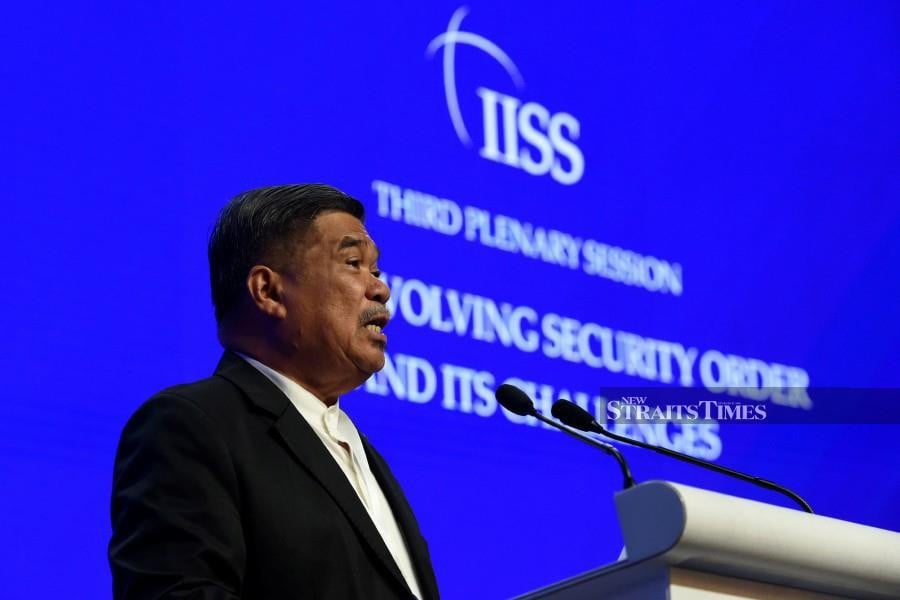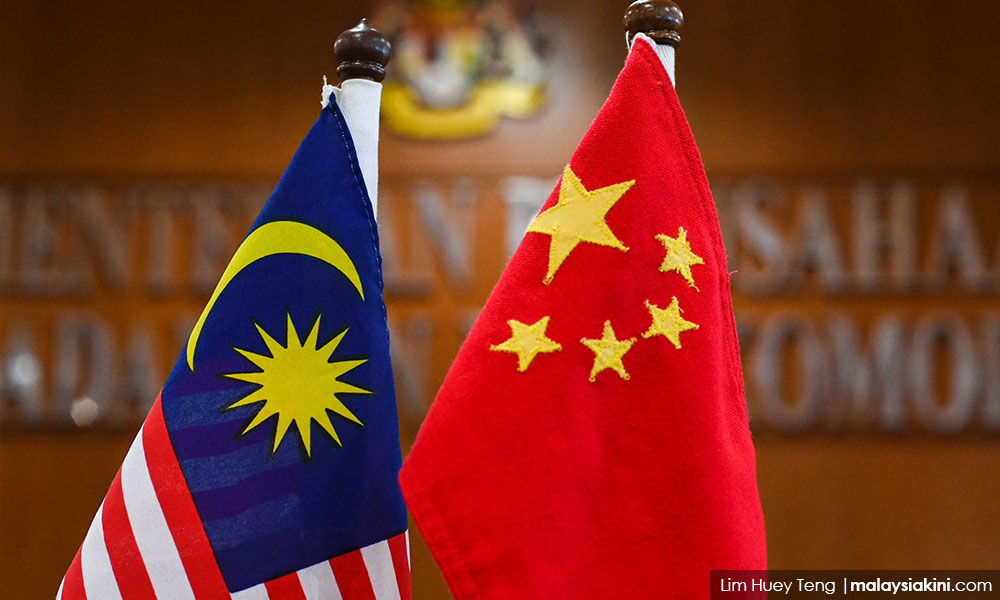
Published by EMIR Research, image from New Straits Times.
Recent attempts to analyse how the US-China trade frictions affect Southeast Asia often invoked proverbial fighting elephants that trample down the grass or whales that break the spines of prawns. By those comparisons, the authors mean to say that smaller economies cannot do much when the giants like the US and China are involved.
Such a fatalistic approach culminated in Malaysian Prime Minister Tun Mahathir Mohammad’s speech at the 25th Future of Asia (Nikkei Conference) on 30th May. Appearing as a staunch supporter of Huawei and its 5G technology, he said that Malaysia is an open book:
“Everybody knows if any countries want to invade Malaysia they can walk through, and we will not resist because it is a waste of time,” he concluded.
The country’s thinkers rose their eyebrows awaiting what the military would say to that. However, at the prestigious Shangri La Dialogue-2019 held in Singapore on 31 May – 2 June, Defense Minister Mat Sabu echoed same herbivorous approach – Malaysia is a small country and cannot do much when two leviathans fight.
Prime Minister Lee Hsien Loong of neighbouring Singapore, who outlined the city-state’s vision of the international landscape at Shangri La, disagrees. “Small countries like Singapore can do little to influence the big powers but we are not entirely without agency”, he said with a cunning smile.
Indeed, the combined economic production of ASEAN’s almost 650 million people constitutes US$2.92 (with the US$20.5 trillion and US$13.6 trillion GDP of the US and China, respectively), which is a figure to reckon with. Prime Minister Lee put it gently by saying that Singapore is still choosing a provider for 5G infrastructure, while Malaysia’s Mahathir already made headlines from Tokyo voicing his unequivocal support for Huawei.
Other ASEAN members remained quiet, or rather, quietly supportive of China’s projects in the region, including controversial Huawei’s expansion and various BRI-related projects.
No matter how divisive or, instead, pro-globalisation some would like to present China’s Belt and Road Initiative (BRI), the reality does not lie at any of the extremes. The decisions to maintain a Chinese view of regional and universal connectivity is made by the governments and rarely based on public consultations. The uproar about the potential “debt threat”, like in Malaysia in 2018 propelled to power an opposition government for the first time since its independence in 1957, and was consequently soothed by the same person who instigated the wave – Tun Mahathir.
The Pakatan Harapan opposition coalition came to power blaming the East-Coast Rail Link (ECRL) and two gas pipelines as elements of BRI. In 2019, after a series of vague statements, and renegotiations, the cost of the ECRL was cut by almost a third, and the project was on again. At the same time, no feasibility study of the project has been presented, and no grudges towards China for helping the scandalous 1MDB to launder money (and essentially, help the corrupt government to impoverish the nation) are voiced anymore.
Mahathir, who alluded to China’s new form of colonialism while on his trip to Beijing last year, rendered wholehearted support to Huawei, ECRL and stated that he “would rather side with China than fickle US”, in one of his interviews.
Since the new “old” Malaysia’s prime minister (Mahathir held the post from 1981-2003) also returned to his anti-Israeli stance, he is upsetting the American vision of how cohesion should be built in Southeast Asia. In March’s speech, Secretary of State Mike Pompeo already warned that the US is going to consider anti-Zionism as anti-Semitism – while intellectuals and activists have always drawn a line between the two.
With these developments, the US acting secretary of defense Patrick Shanahan speaking at the Shangri La Dialogue was obviously pleased to say that the US does not have a better friend in Asia than Singapore.
In fact, the recent grand forums like Shangri La in Singapore, Future of Asia in Japan and BRI in China look like an attempt to at least streamline a unified vision for the region and beyond. The watersheds are seen, for example, from the way those supporting the American vision embed the notion of the ‘Indo-Pacific’ into their speeches, while the others remain faithful to the well-established ‘Asia-Pacific’. Despite the traditional softness, with which smaller Asian nations avoid troubles and any face-off, the call among the regional nations to look at their own interests first, is very acute, disregarding those conceptual frameworks.
Both China and the US are visibly trying to address this by promoting their own perspective. Speaking of BRI, China underpins its common value for all the participants and promises to be more careful about the financial part of the project. The American Indo-Pacific strategy, in its turn, is also supposed to be universally attractive, as it states that underlying principles of cooperation are not American but those broadly accepted in the region. Acting Secretary Shanahan reiterated several times that Indo-Pacific remains a priority theatre of US strategy.
It appears that this exchange of statements between the US and China, is seen warily by regional members, who keep the image of fighting whales in mind. When those like the US and France come to speak with utter self-confidence about being “a resident power” in Southeast Asia (referring to their objective presence to one or another extent), some in the region question the boundaries of what should fall under the authority of ASEAN members.
If the US, the UK, France or China speak of the need to stand up to the regional challenges, to what extent does it violate ASEAN’s strategic autonomy? China’s construction of military facilities in the South-China Sea, in its turn, is also questioned amidst acknowledgement of Beijing being a number one economic partner to many.
In the context of the nascent world order in which configurations are yet to be determined, the commitment of the Western ministers of defense at the Shangri La Dialogue in Singapore to the “rules-based international order”, thus, is at best seen with suspicion; and at worst, as a sort of mockery. “When the rules are no longer the boundary of ambition, what security can be there for smaller states,” said France’s minister of armed forces Florence Parly. Even though such comments mostly allude to China, other external actors are seen with the same wariness with regards to their ambitions, while regional players mirror the growing public demand to put their nations’ interests first.
Julia Roknifard is Director of Foreign Policy at EMIR Research, an independent think-tank focused on strategic policy recommendations based upon rigorous research.

